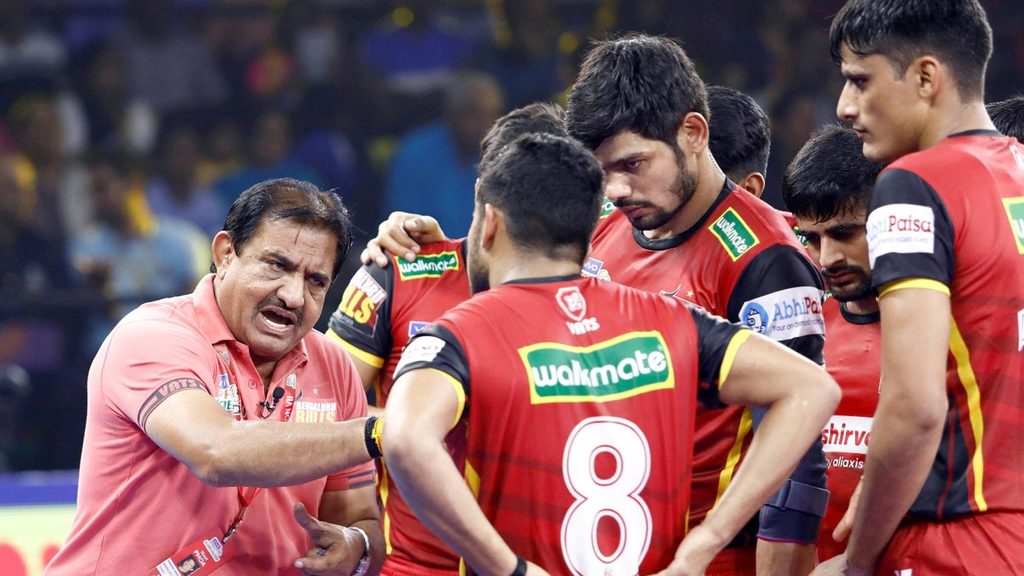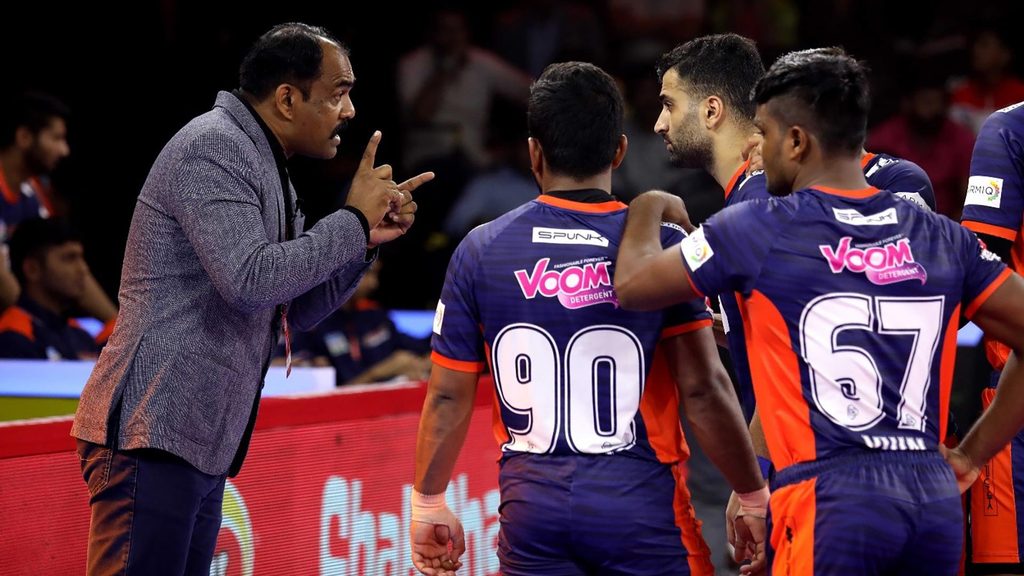Might of the Mind: The strategic side of kabaddi


"Raiding against a five-man defence is the toughest prospect in kabaddi, followed by a four-man defence," reveals Bengaluru Bulls' Randhir Singh Sehrawat. "Raiding against a six-man or a seven-man defence is comparatively easier because the bonus is available."
While the untrained observer would prefer seeing their choice raider go up against fewer defenders, on the mat the approach is more strategic and based on circumstances.
"We work on how to raid in different situations," Sehrawat adds. "We have specialist raiders for every situation."
Some raiders attack from the left of the mat, some use their reach to ensure they don't have to go deep, while others prefer to lure in defenders and sprint back to the mid-line.
Each plays to his strength, but it depends where the match rests at the time when the specific raid needs to be done. For instance, with crunch points needed, a raider may have to entice defenders into a mistake by going in deep.
"You have to be decisive in your decision making," Randhir Singh Sehrawat asserts. "You can't delay your decision as a split second can be the difference between success and failure, no matter how good your skills are. Indecisiveness has no place in kabaddi and a sound strategy is the only way to avoid that."
Game of the mind
There is a lot more that goes on beyond what is visible to the casual observer as raiders, defenders, as well as the coaching staff, are constantly making minute mental calculations which could make or break the outcome of the game and the entire season for the team.
"Kabaddi looks mostly physical, but it's actually entirely a game of the mind," insists Gujarat Fortunegiants coach Manpreet Singh. "As a coach, I have to understand the strategies of my opponents as early as I can. On the mat, it's very important for coaches to educate the players and make the team aware of what the opposition is up to since we have an outside view of the game."
While these strategies have always been a part of kabaddi, the recent changes in gameplay have made the coaches and teams lay greater emphasis on this aspect. Bengal Warriors coach BC Ramesh explained how the methods of plotting strategies have evolved from simple drawings on a board in earlier seasons to complex, in-depth analysis of player videos in modern times.
"It is easier to understand where a player was successful or unsuccessful during a raid or a tackle when analysing video," the coach says. "The new players are using this to their advantage to learn the different nuances of the sport.
"The earlier seasons were all about basic strategy and guiding players based on experience. Video instructions too were unavailable at the time. But there has been a lot of improvement since then."

Subbing strategies
Another classic example is the use of substitutes. When a team is down to three players on the mat, for example, and all three are more adept raiders than defenders, one of them would be substituted for a defender. With the Super Tackle on, a potential successful tackle can turn the game around as it would take the team on the back foot further away from an impending All Out.
In light of these things, analysis plays an important role in the players' daily schedule as well as the coach's instructions during a match.
"Our video instructions take place in the morning, mainly pre-game, and we keep discussing player tactics during that time," coach Ramesh elaborates. "We need to continuously adapt to the different strategies applied by our opponents.
"Every team has different gameplays and we have to be creative in our approach often."
Related tags:
Latest Updates
- © Pro Kabaddi
- Terms & Conditions
- Privacy Policy
- Cookie Policy
Powered by: Sportz Interactive
